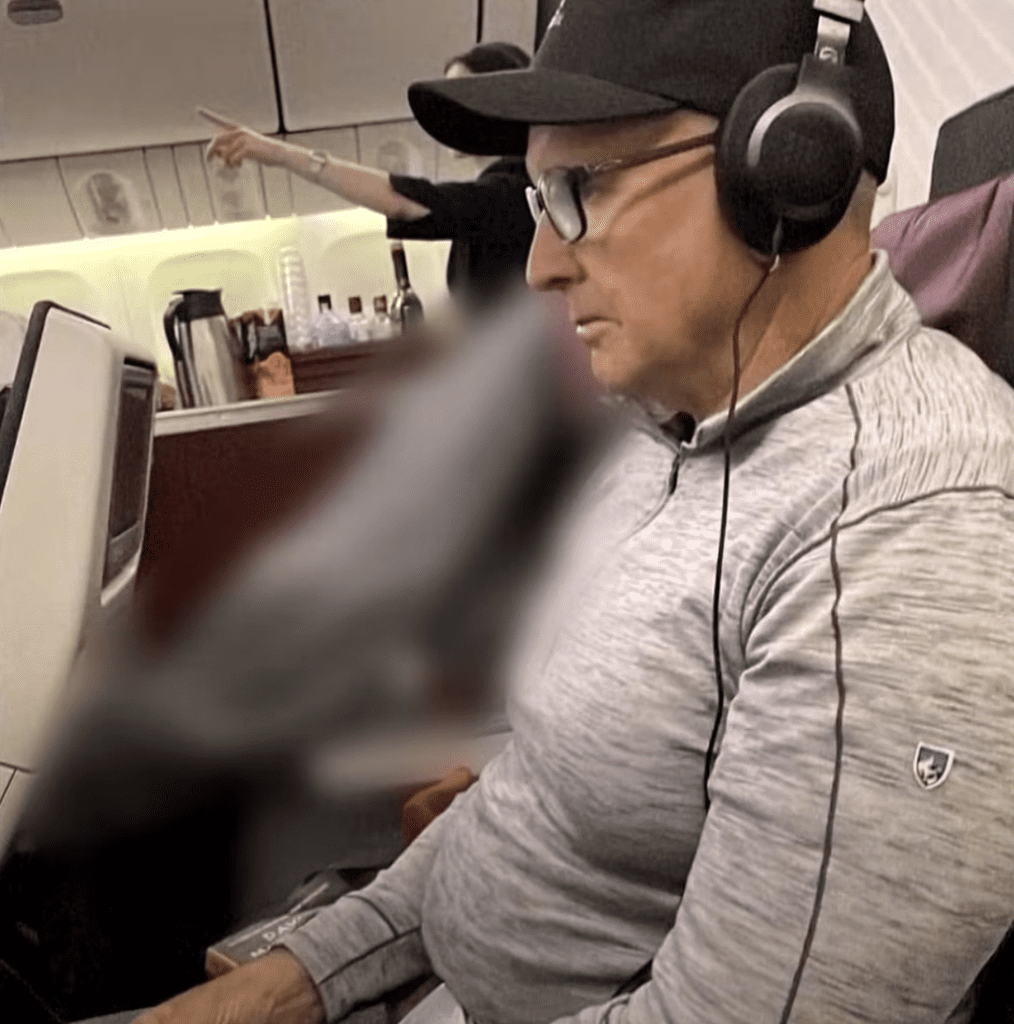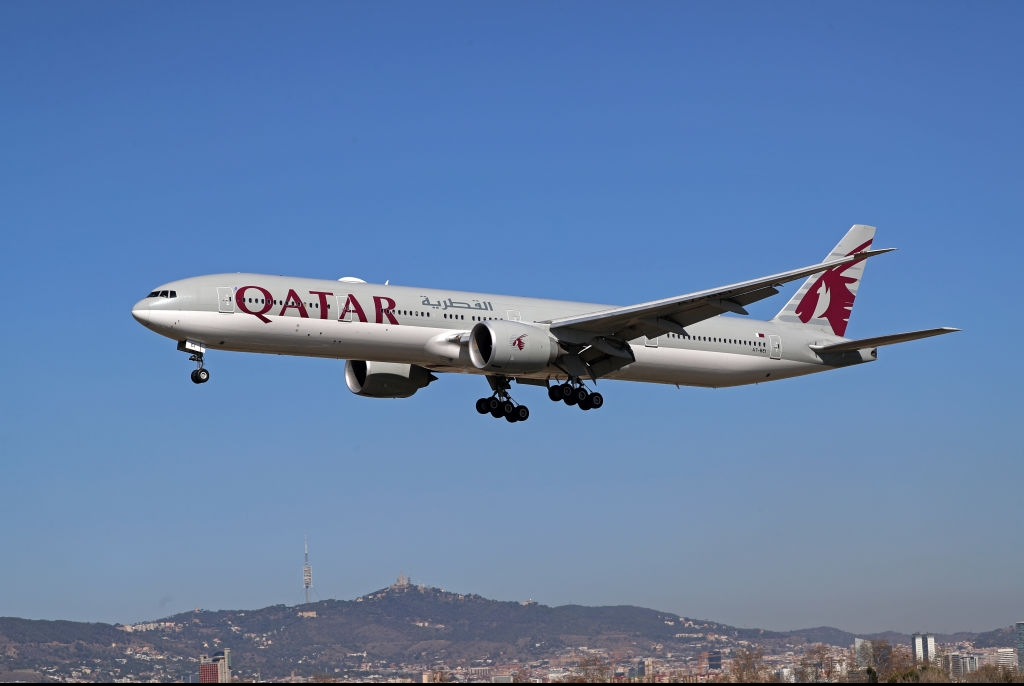Flying can be an exhausting experience, but for one couple, their recent Qatar Airways flight from Melbourne to Doha turned into a distressing ordeal. Mitch and Jenny, the passengers at the center of this unsettling incident, claim they were forced to sit next to a deceased passenger for hours, despite empty seats being available elsewhere on the aircraft.
Their shocking experience has raised serious questions about airline protocols for handling in-flight medical emergencies and the treatment of grieving passengers.

A Routine Flight Turns Into a Nightmare
Mitch and Jenny were seated comfortably on their long-haul flight when tragedy struck.
A fellow passenger, who had been seated near them, suddenly collapsed in the aisle. The flight crew immediately responded, performing CPR and trying to revive the woman. However, despite their best efforts, she tragically passed away mid-flight.
“The staff were there in no time, and I pat them on the back, they did a wonderful job trying to revive her,” Mitch told A Current Affair’s Ally Langdon, as reported by News.com.au.
“It [happened] right beside me in the aisle, and they did everything they could, but unfortunately, the lady couldn’t be saved, which was pretty heartbreaking to watch.”
While the couple commended the crew’s initial response, what followed left them shocked and deeply disturbed.
Flight Crew Struggled to Relocate the Body
After the passenger passed away, the airline crew attempted to move the body but ran into complications.
Mitch explained that staff initially tried to move the deceased woman to business class, using a two-wheeled chair. However, their efforts were unsuccessful.
“They looked a bit frustrated and then they just looked at me and saw seats were available beside me—we were in a row of four by ourselves—and they just said to me, ‘Can you move over, please?’”
Without hesitation, Mitch complied. The crew placed the deceased woman in his seat, covering her with a blanket.
Jenny, visibly shaken while recounting the ordeal, described it as “traumatizing”.
Though she was eventually able to relocate when another passenger offered her an empty seat, the experience left a lasting emotional impact.

Did the Airline Follow the Proper Protocol?
According to the International Air Transport Association (IATA), airlines have clear guidelines on how to handle an in-flight death.
✔ If a passenger dies mid-flight, the crew should attempt to move the body to an empty row, if available.
✔ If no empty rows exist, the deceased should remain in their original seat, secured with a seatbelt, with their eyes closed and covered with a blanket as a sign of respect.
✔ Other passengers should not be disturbed unnecessarily and should be relocated if needed.
However, Mitch and Jenny claim that despite available empty seats, they were not given the option to move elsewhere. Instead, they were left sitting next to the deceased for four more hours, adding to their distress.
Was this a failure in protocol, or were the crew simply unprepared for such an event?
A Disturbing End to the Journey
As if the in-flight experience wasn’t already traumatic enough, the situation became even more distressing upon landing.
When the plane arrived at its destination, emergency personnel boarded the aircraft to attend to the deceased passenger. But what happened next shocked Mitch even further.
“They told us in our area to stay in our seats, and then the ambulance officers and the police came in,” he recalled.
Then, to his horror, the medical team removed the blanket covering the deceased woman—while other passengers were still present.
“I was there, and I got to see her face. Yeah, it wasn’t nice,” Mitch admitted.
“I can’t believe they told us to stay. I thought they would have got us out quickly and let the ambulance and the police in there with no other people in there. But they told us to sit down and wait.”
Once again, IATA guidelines state that other passengers should be disembarked before the body. This allows the proper authorities to handle the situation with dignity, without further distressing those who witnessed the event.
This apparent failure in protocol has led to public outrage, with many questioning why the airline did not ensure a more compassionate approach to handling the situation.

Passenger Safety vs. Emotional Trauma: Who Is Responsible?
While medical emergencies are unpredictable, airlines must be prepared to handle them with professionalism, compassion, and efficiency.
This incident raises critical ethical and procedural questions:
⚠ Why were passengers made to sit next to a deceased body for hours?
⚠ Why weren’t they relocated, even though there were empty seats?
⚠ Why weren’t passengers allowed to disembark before emergency personnel removed the blanket?
Aviation experts argue that while crew members are trained to handle medical situations, there are often grey areas when it comes to passenger comfort and emotional well-being.
Was this a case of poor decision-making by the airline staff, or is there a larger issue with airline policies on handling in-flight deaths?
The Airline’s Silence: No Official Response Yet
As of now, Qatar Airways has not publicly responded to the claims made by Mitch and Jenny.
With increasing public concern and media attention, aviation industry experts expect the airline to address whether the crew followed proper guidelines and what measures will be taken to prevent similar incidents in the future.
The couple’s harrowing experience is a stark reminder of the emotional toll unexpected events can have on passengers—and why airlines must prioritize both protocol and human decency in these situations.
Final Thoughts: A Disturbing Experience That Raises Serious Questions
Mitch and Jenny’s experience highlights a major gap in airline policies regarding passenger comfort and crisis management.
While in-flight deaths are rare, they do happen, and airlines must ensure that proper procedures are followed—not just for logistical reasons but to also show compassion to those affected.
No passenger should have to endure a situation like this. Whether this was a failure of policy, poor judgment by the crew, or simply an unfortunate series of events, one thing is clear:
✔ Airlines need to do better.
✔ Passenger well-being should always come first.
✔ Clearer protocols must be enforced to handle in-flight tragedies with dignity.
The aviation industry—and Qatar Airways—must now reflect on this incident and determine how to improve their approach to ensure that no other passengers have to go through such an emotionally distressing experience again.